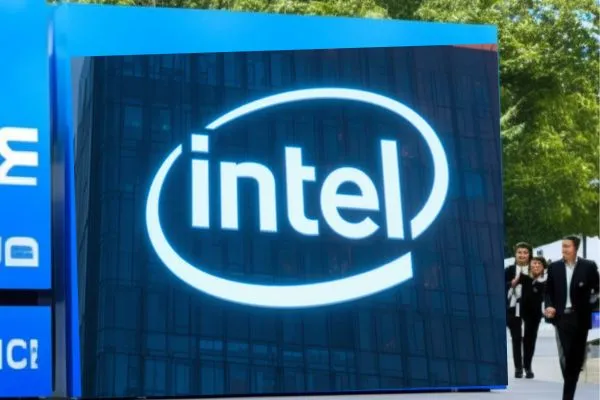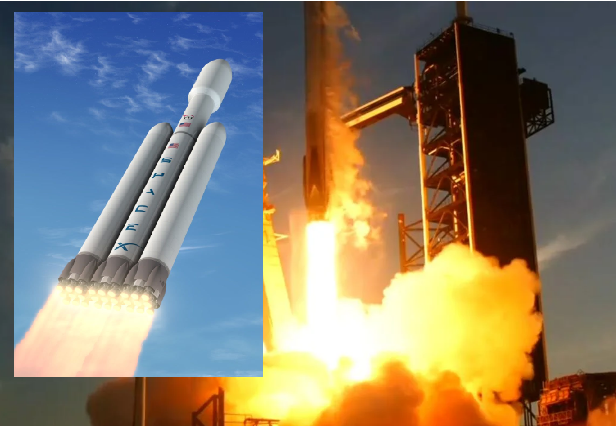Intel is making headlines once again, but this time, it’s not for its latest chip innovation—it’s for the possibility of a massive corporate shake-up that could more than double its value.
Reports suggest that industry giants Taiwan Semiconductor Manufacturing Co. (TSMC) and Broadcom are circling the struggling chipmaker, eyeing a split that could send shockwaves through the tech world.
The Billion-Dollar Question: Should Intel Break Up?
Rumors have been swirling about a potential breakup of Intel, a company that has long been an icon in the semiconductor industry but has struggled in recent years.
According to reports from the Wall Street Journal and Bloomberg, Broadcom is interested in acquiring Intel’s chip-design and marketing arm, while TSMC is contemplating taking over some—or all—of Intel’s chip manufacturing facilities.
If a deal goes through, it could unlock significant value for Intel’s long-suffering shareholders.
Analyst Mark Lipacis from Evercore estimates that Intel, currently valued at about $102 billion, could be worth as much as $237 billion if it splits into separate businesses.
That translates to a potential stock price jump from $23.60 to $54.18 per share.
Regulatory Hurdles and Political Roadblocks
However, a deal of this scale wouldn’t come without challenges. Regulatory scrutiny, geopolitical concerns, and Intel’s own operational structure could complicate any potential breakup.
For starters, any foreign takeover of Intel’s foundry business could face intense scrutiny from the U.S. government.
With Intel playing a crucial role in defense contracts and national security, analysts believe Washington may not be keen on handing over control to TSMC, a Taiwan-based company.
Bank of America’s Vivek Arya warned that the CHIPS Act, which provided Intel with billions in funding, could impose legal constraints that prevent the company from losing majority ownership of its foundries.
Adding to the complexity, Intel’s factories are specifically designed to manufacture x86 CPUs.
Transitioning these plants to produce a wider variety of chips could prove to be an expensive and time-consuming challenge, analysts say.
Wall Street Weighs In
While the breakup speculation has sparked excitement among investors—sending Intel’s stock soaring 11% in its biggest rally since 2023—not everyone is convinced a deal is imminent.
Wall Street analysts remain divided on whether splitting Intel up would be the best move.
Bernstein analyst Stacy Rasgon believes Broadcom’s CEO Hock Tan could be a strong leader for Intel’s chip-design unit, given his track record of aggressively cutting costs while maintaining innovation.
On the other hand, Raymond James analyst Srini Pajjuri suggests that a better outcome might be for the U.S. government to work directly with TSMC to expand its U.S. manufacturing footprint instead of letting it acquire Intel’s facilities.
Intel’s Leadership Shake-Up Adds to Uncertainty
Further complicating Intel’s future is its ongoing leadership turmoil. The company parted ways with CEO Pat Gelsinger in December after three years of aggressive cost-cutting, massive layoffs, and a push to secure government funding.
In the interim, CFO David Zinsner and former client computing head Michelle Johnston Holthaus are sharing leadership duties. However, Intel is actively searching for a permanent CEO, and whoever takes the helm will face a daunting to-do list: restore investor confidence, stabilize financials, and decide the fate of Intel’s foundry business.
What’s Next for Intel?
Intel’s financial struggles paint a grim picture. The company’s fourth-quarter sales dropped 7% year-over-year to $14.3 billion, while net earnings plummeted 76%. For 2025, Intel is barely expected to break even.
Despite these challenges, industry insiders believe that whatever happens to Intel will be crucial for the broader U.S. tech industry.
Microsoft co-founder Bill Gates weighed in on the debate, noting that while Intel’s efforts to become a viable alternative to TSMC and Samsung are promising, achieving that goal will take massive capital investment and years of development.
As speculation continues to build, one thing is clear: Intel’s next move could redefine its future—and reshape the global semiconductor landscape.










